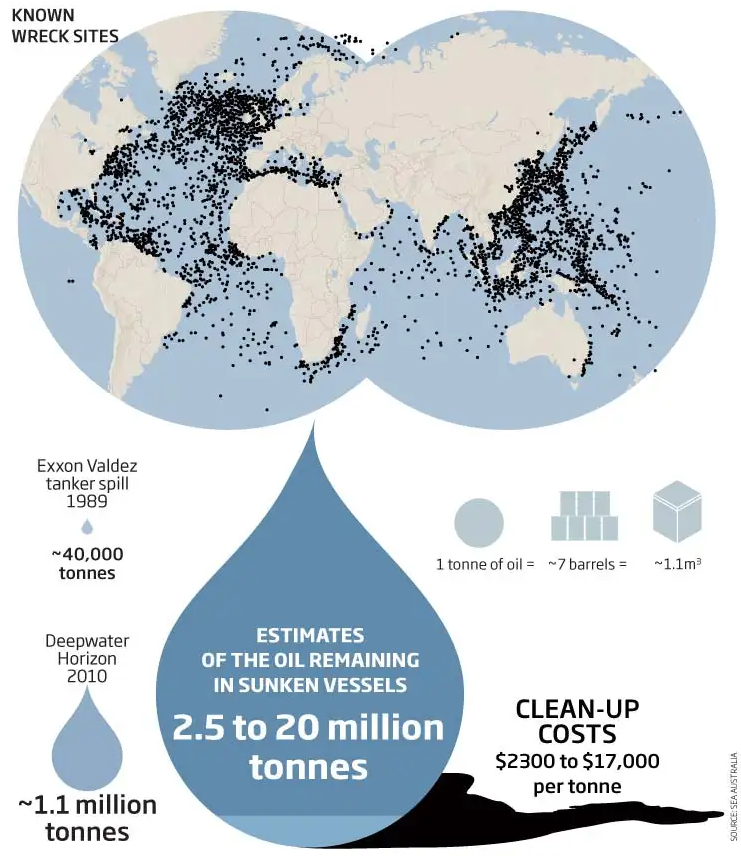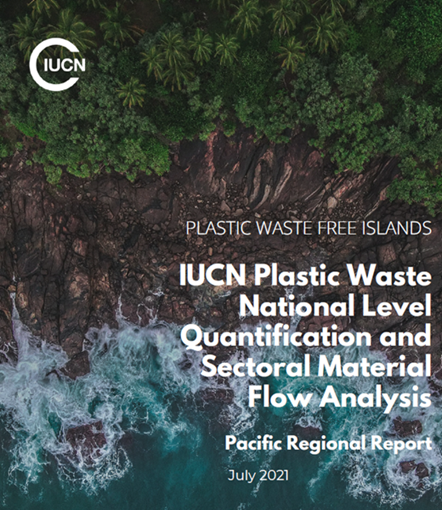What is the issue ?
There are an estimated 3 million sunken and abandoned vessels in the ocean, over 8,500 of which are classified as ‘potentially polluting wrecks’. The majority of these wrecks date back to World War I and II (WWI and WWII) and contain harmful chemical pollutants, unexploded munitions and an estimated 6 billion gallons of heavy fuel oil. This is 545 times more oil than the Exxon Valdez leak in 1989 and 30 times that of the Deepwater Horizon spill in 2010, both of which had severe and long-lasting environmental consequences.
Severe weather events resulting from climate change are likely to speed up the process of wrecks breaking apart. After more than 75 years of corrosion, leaks from sunken vessels are expected to reach their highest levels within ten years but scientists do not yet have enough data to forecast when or where individual leaks will occur.
 Photo: © NewScientist
Photo: © NewScientist






